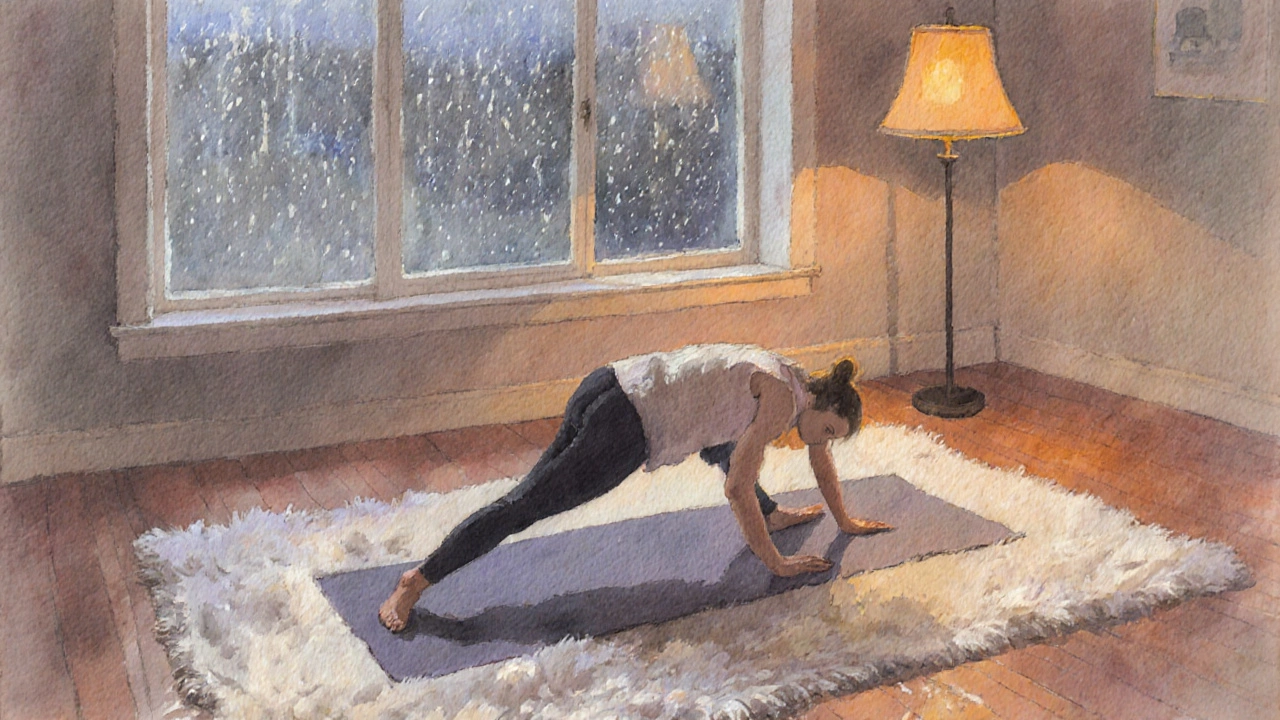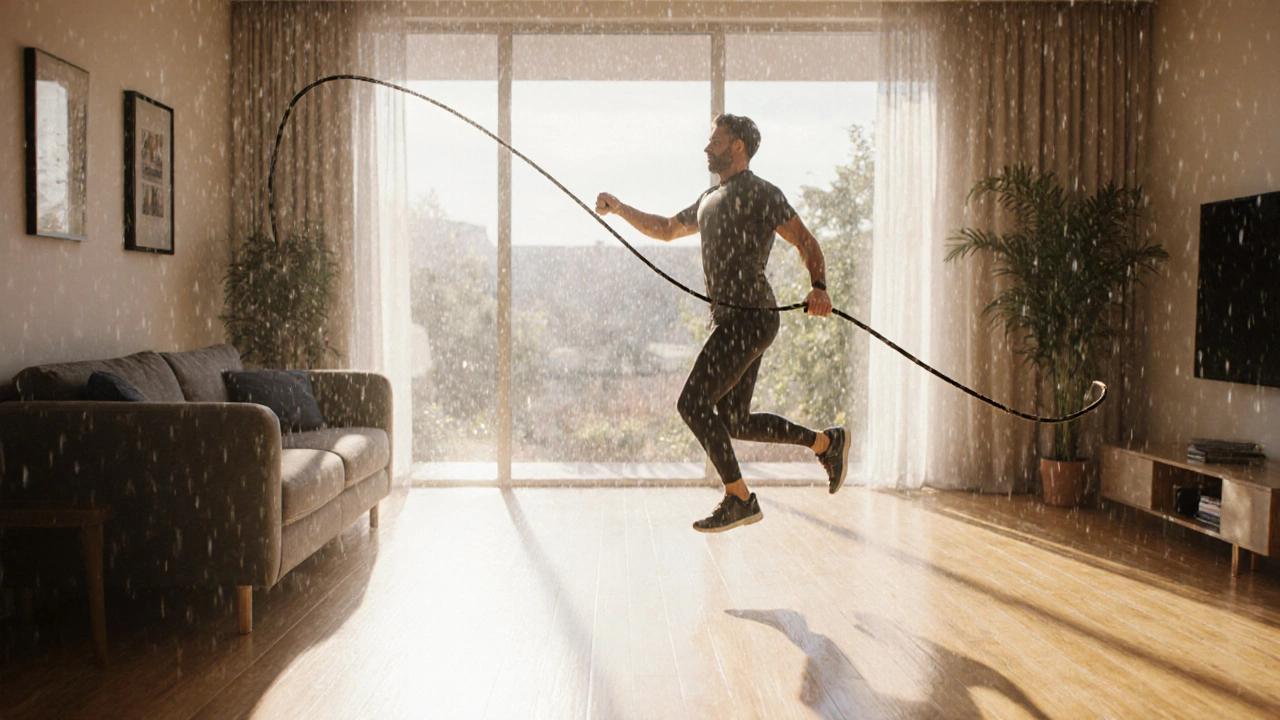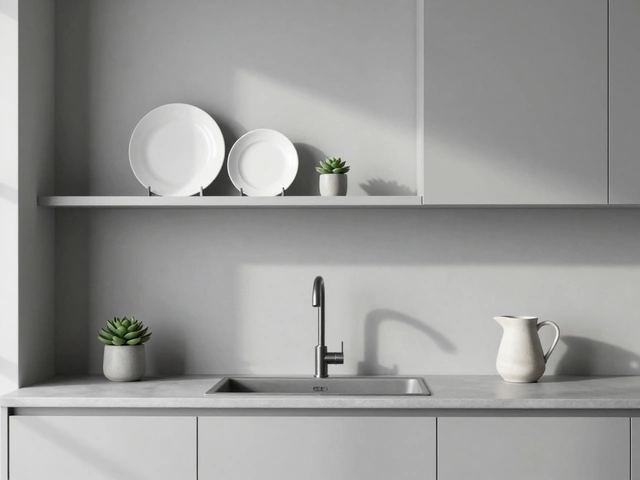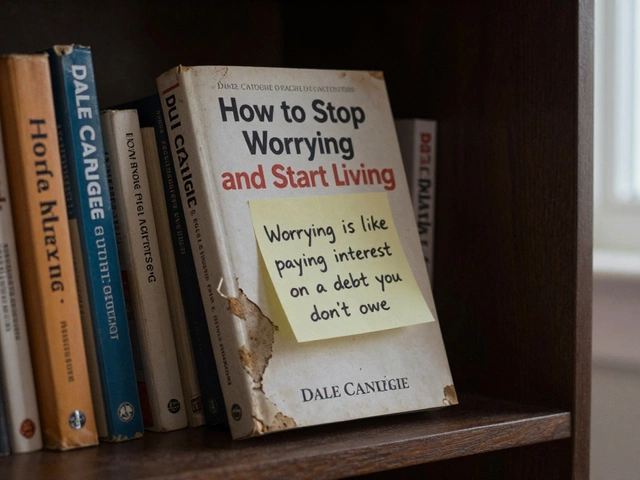Best Indoor Exercise Calculator
Enter your preferences and click "Find My Perfect Indoor Workout" to get personalized recommendations.
Stuck inside on a rainy day or just prefer the comfort of your living room? Finding the best indoor exercise means you can stay fit without stepping out. Below you’ll discover which workouts actually move the needle on calories, strength, and mood, plus how to stitch them into a routine that fits your schedule.
Quick Takeaways
- Cardio shines with jump rope, dancing, and HIIT for calorie burn.
- Strength gains come from bodyweight circuits, dumbbell routines, and resistance‑band workouts.
- Flexibility and stress relief are best served by yoga and Pilates.
- Mix high‑intensity bursts with low‑impact moves to avoid burnout.
- Start with 20‑30 minutes, 3‑4 times a week, then scale up.
What Counts as Indoor Exercise?
Indoor exercise is a form of physical activity performed inside a building, typically requiring minimal space and equipment. It covers everything from heart‑pumping cardio to strength‑building circuits and mind‑body flows. Because walls and weather aren’t variables, consistency becomes easier, which is why many experts prioritize a solid indoor routine.
When assessing "best," we look at three factors: calorie expenditure, muscle activation, and accessibility. An ideal indoor workout scores high on all three while staying safe for most fitness levels.
Cardio Options That Actually Burn Calories
Cardio refers to aerobic activities that raise heart rate and improve cardiovascular health can be surprisingly effective inside.
- Jump rope: 10 minutes of steady jumping can torch 120‑150 calories, and all you need is a rope.
- Dancing: Put on a playlist and move; a 30‑minute session can match a brisk walk while boosting mood.
- HIIT high‑intensity interval training mixes short bursts of effort with brief rests: 20 minutes of 30‑second sprints (bodyweight or bike) can burn 200‑300 calories and keep metabolism elevated for hours.
These choices need little space, making them perfect for apartments or home offices.

Strength & Muscle Builders
Strength training focuses on muscle contraction against resistance to increase force production doesn’t always require a full gym.
- Bodyweight training: Push‑ups, squats, lunges, and planks use your own mass as resistance. A 30‑minute circuit can engage all major muscle groups.
- Dumbbell routines: A pair of 5‑15kg dumbbells let you perform rows, presses, and dead‑lifts at home. Volume matters more than weight for beginners.
- Resistance bands: Elastic bands provide variable tension and are easy on joints. They’re ideal for both upper‑body pulls and lower‑body extensions.
Strength sessions improve bone density, posture, and daily functional capacity, which is why they rank high on the "best indoor" list.
Flexibility and Mind‑Body Practices
Yoga combines postures, breath work, and meditation to enhance flexibility and stress reduction and Pilates focuses on core stability, controlled movements, and balanced muscular development excel in the indoor arena because they need only a mat.
- Yoga: A 30‑minute Vinyasa flow can improve joint range, lower cortisol, and aid sleep.
- Pilates: Emphasizes core activation and alignment; a beginner routine can sculpt the midsection without heavy equipment.
Both practices complement high‑intensity work by fostering recovery and preventing injuries.
Comparison of Top Indoor Workouts
| Exercise | Primary Benefit | Calories (30min) | Equipment Needed | Skill Level |
|---|---|---|---|---|
| Jump Rope | Cardio & Coordination | 120‑150 | Rope | Beginner‑Advanced |
| HIIT (bodyweight) | Metabolic Boost | 200‑300 | None | Intermediate |
| Bodyweight Circuit | Strength & Endurance | 150‑200 | None | Beginner‑Intermediate |
| Dumbbell Full‑Body | Muscle Growth | 180‑250 | Dumbbells | Intermediate |
| Yoga (Vinyasa) | Flexibility & Stress Relief | 80‑120 | Mat | All Levels |
| Pilates | Core Stability | 90‑130 | Mat | Beginner‑Intermediate |

Designing Your Personal Indoor Routine
Start by answering three questions:
- What’s your primary goal? (Weight loss, muscle tone, stress relief.)
- How much time can you commit each day?
- What equipment do you already own?
Then follow this simple template:
- Warm‑up (5min): Light marching, arm circles, or dynamic stretches.
- Main block (20‑30min): Alternate between a cardio burst (e.g., 4min jump rope) and a strength segment (e.g., 4min bodyweight circuit). Repeat 2‑3 cycles.
- Cool‑down (5min): Stretch major muscle groups, add a short yoga flow for relaxation.
Adjust interval lengths based on fitness level-shorter bursts for beginners, longer for seasoned athletes.
Sample Weekly Plan (Four Days a Week)
| Day | Focus | Routine |
|---|---|---|
| Monday | Cardio + Core | HIIT (30sec on/30sec off) × 8 + Plank series |
| Tuesday | Strength | Dumbbell full‑body circuit (3sets of 12 reps each) |
| Thursday | Flexibility & Balance | 45‑min Vinyasa yoga flow |
| Saturday | Mixed | Jump rope 10min + Bodyweight circuit 20min + Cool‑down stretch |
Rest days can include gentle walking, mobility work, or simply leisure activities. Consistency beats intensity when space is limited.
Common Pitfalls and Pro Tips
- Pitfall: Skipping warm‑ups. Tip: A five‑minute warm‑up raises muscle temperature and reduces injury risk.
- Pitfall: Over‑relying on one modality. Tip: Rotate cardio, strength, and flexibility to avoid plateaus.
- Pitfall: Ignoring progression. Tip: Increase time, reps, or resistance every 2‑3 weeks.
- Pitfall: Poor space management. Tip: Clear a 2×2m area, use a yoga mat, and store equipment vertically.
Frequently Asked Questions
Can I get a full‑body workout without any equipment?
Yes. A circuit of push‑ups, squats, lunges, plank variations, and burpees can target all major muscle groups. Aim for 3‑4 rounds with 30‑second rest intervals to keep heart rate elevated.
How many calories does a 30‑minute indoor workout typically burn?
Calorie burn varies by intensity and body weight. Rough averages: HIIT (200‑300kcal), jump rope (120‑150kcal), bodyweight circuit (150‑200kcal), and yoga (80‑120kcal).
Do I need a special floor for indoor cardio?
A non‑slippery surface works fine. Consider a rubber mat for jump rope or high‑impact moves to protect joints and reduce noise.
How often should I change my indoor routine?
Every 4‑6 weeks, swap exercises, adjust interval lengths, or increase resistance. Changing stimulus prevents plateaus and keeps motivation high.
Is indoor exercise as effective as outdoor workouts?
Effectiveness depends on effort, not location. When you match intensity, indoor sessions can burn as many calories and build as much strength as outdoor runs or gym classes.










